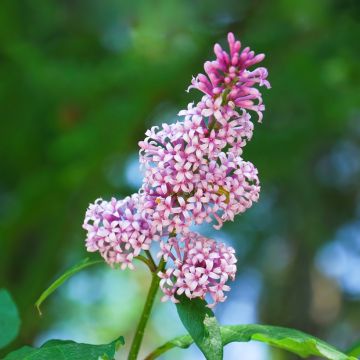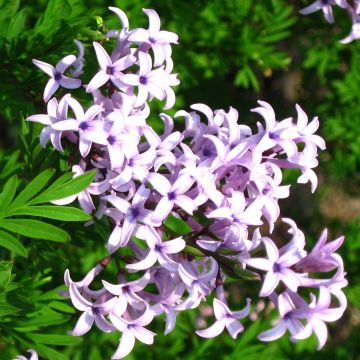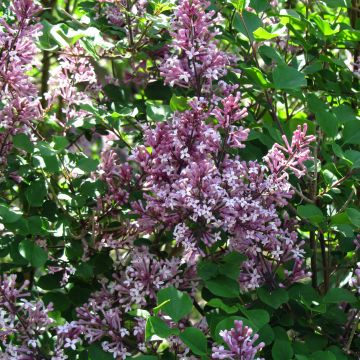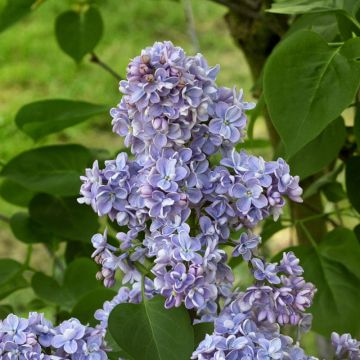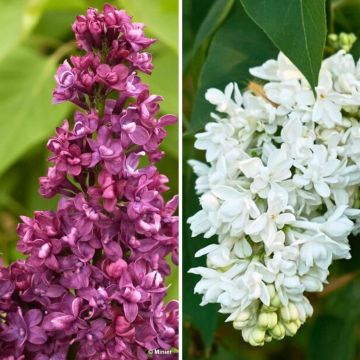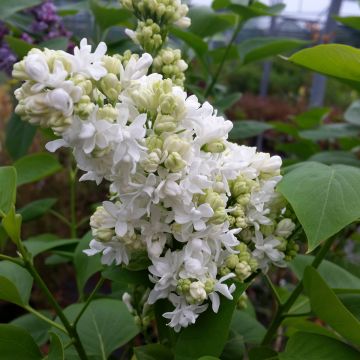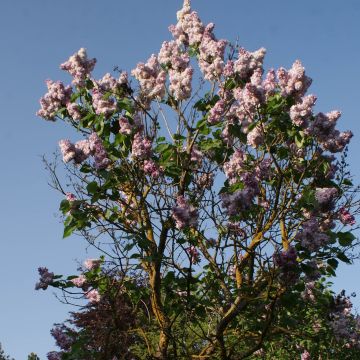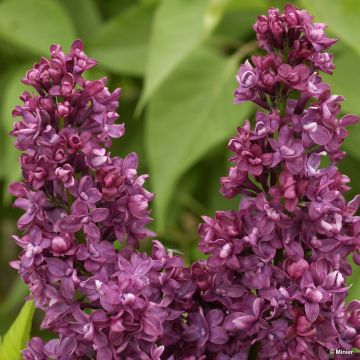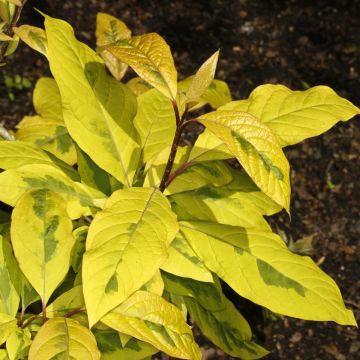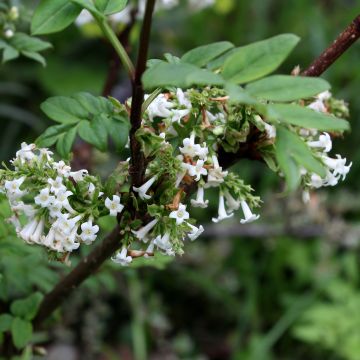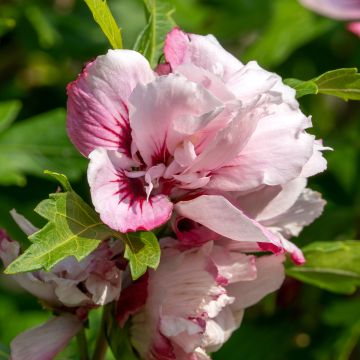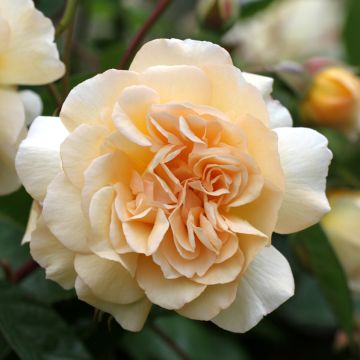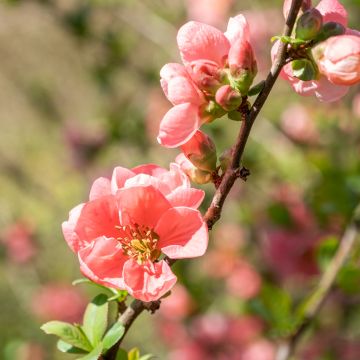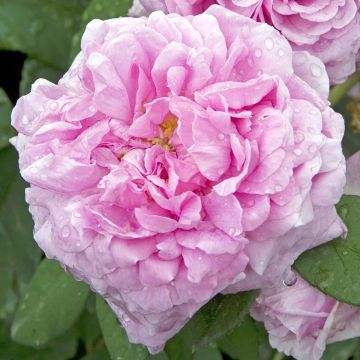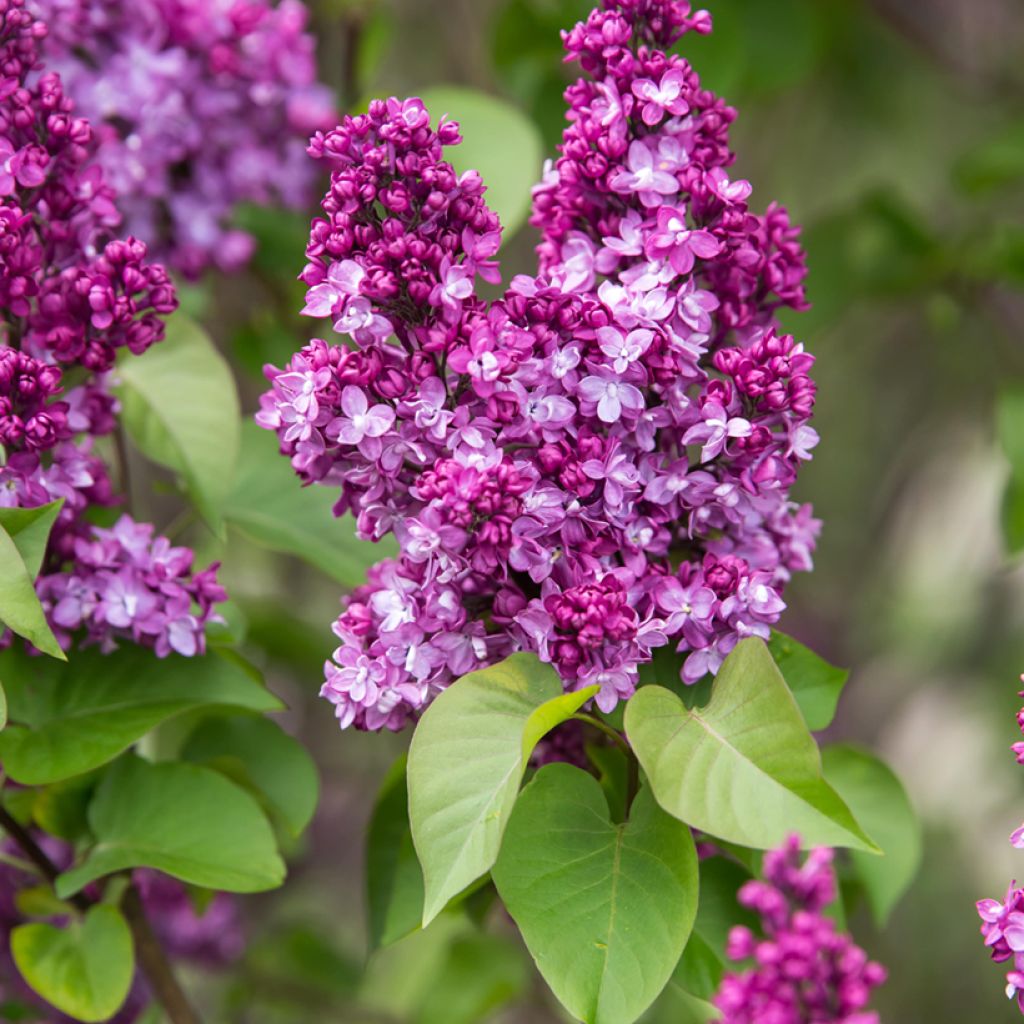

Syringa Virtual Violet - Lilac


Syringa Virtual Violet - Lilac
Syringa Virtual Violet - Lilac
Syringa 'Bailbridget' First Editions® Virtual Violet®
Lilac, Common Lilac
Special offer!
Receive a €20 voucher for any order over €90 (excluding delivery costs, credit notes, and plastic-free options)!
1- Add your favorite plants to your cart.
2- Once you have reached €90, confirm your order (you can even choose the delivery date!).
3- As soon as your order is shipped, you will receive an email containing your voucher code, valid for 3 months (90 days).
Your voucher is unique and can only be used once, for any order with a minimum value of €20, excluding delivery costs.
Can be combined with other current offers, non-divisible and non-refundable.
Why not try an alternative variety in stock?
View all →This plant carries a 24 months recovery warranty
More information
We guarantee the quality of our plants for a full growing cycle, and will replace at our expense any plant that fails to recover under normal climatic and planting conditions.
Would this plant suit my garden?
Set up your Plantfit profile →
Description
Lilac or Syringa First Editions Virtual Violet 'Bailbridget' is a charming variety with a compact habit, unusual colours, and disease-free foliage. Its young purple leaves are decorative and its very dark stems remain interesting all year round. In spring, you will admire its fine clusters of double, purple to violet, fragrant flowers mixed with raspberry red buds. Its growth is more modest than that of classic varieties so it is better suited to small gardens. A hardy, deciduous shrub that is easy and generous.
Syringa 'Virtual Violet' is the result of a cross between the lilac 'Charles Joly' and two varieties from the United States National Arboretum. It is a shrub of the olive family. This recent variety forms an upright and dense shrub, reaching an average height of 2.20 m and a spread of 1.70 m. Its deciduous, triangular and heart-shaped leaves are smaller than those of classic varieties. They appear in spring, in a green shade washed with purple and violet. The abundant flowering takes place in May or sometimes as early as mid-April depending on the climate. The branches of this lilac are dark purple from spring to the end of summer. At the end of one-year-old branches, fairly thin flower clusters appear, not very long, but nicely erect. These clusters, called thyrses, reach a length of between 15 and 20 cm. Their overall pyramidal shape is tapered. The dark purple-red flower buds open into double flowers, with the corolla forming a long tube at the base. Their colour changes from dark purple to lighter violet and they have a very floral fragrance.
Virtual Violet is easy to grow in any well-drained soil, in almost all climates, an essential shrub in a romantic or traditional garden. To create a flowering hedge from spring to autumn, for example, combine it with a Japanese Quince 'Eximia', a Butterfly Bush 'Berries and Cream', an Indian Lilac 'Black Solitaire Purely Purple', and a European Spindle 'Red Cascade'. It can also be used as a solitary specimen, surrounded by a bed of small roses like 'Diamant Rose' and 'Robe Fleurie'.
Report an error about the product description
Plant habit
Flowering
Foliage
Botanical data
Syringa
'Bailbridget' First Editions® Virtual Violet®
Oleaceae
Lilac, Common Lilac
Cultivar or hybrid
Other Syringa - Lilac
View all →Planting and care
The 'Virtual Violet' Hybrid Lilac likes full sun, in deep soil that remains fairly moist, even clay-limestone. It can tolerate any type of soil, but prefers slightly limestone soils and is sensitive to strongly acidic soils. It will grow well in semi-shaded exposure, but flowering will be reduced. Its hardiness is excellent, beyond -15°C. It is easy to grow and requires only mulching and regular watering in dry climates during the summer to maintain a certain level of humidity. If the common lilac grows in the south, its large-flowered hybrids suffer from a lack of water that can disfigure their vegetation. In any case, water it in the first few years in case of marked drought. You can cut the flowering branches to make beautiful bouquets, or at the end of flowering to promote the appearance of new flowers and avoid tiring the bush. Avoid severe pruning that limits the flowering of the following spring, unless your Lilac becomes too large.
Planting period
Intended location
Care
This item has not been reviewed yet - be the first to leave a review about it.
Similar products
Haven't found what you were looking for?
Hardiness is the lowest winter temperature a plant can endure without suffering serious damage or even dying. However, hardiness is affected by location (a sheltered area, such as a patio), protection (winter cover) and soil type (hardiness is improved by well-drained soil).

Photo Sharing Terms & Conditions
In order to encourage gardeners to interact and share their experiences, Promesse de fleurs offers various media enabling content to be uploaded onto its Site - in particular via the ‘Photo sharing’ module.
The User agrees to refrain from:
- Posting any content that is illegal, prejudicial, insulting, racist, inciteful to hatred, revisionist, contrary to public decency, that infringes on privacy or on the privacy rights of third parties, in particular the publicity rights of persons and goods, intellectual property rights, or the right to privacy.
- Submitting content on behalf of a third party;
- Impersonate the identity of a third party and/or publish any personal information about a third party;
In general, the User undertakes to refrain from any unethical behaviour.
All Content (in particular text, comments, files, images, photos, videos, creative works, etc.), which may be subject to property or intellectual property rights, image or other private rights, shall remain the property of the User, subject to the limited rights granted by the terms of the licence granted by Promesse de fleurs as stated below. Users are at liberty to publish or not to publish such Content on the Site, notably via the ‘Photo Sharing’ facility, and accept that this Content shall be made public and freely accessible, notably on the Internet.
Users further acknowledge, undertake to have ,and guarantee that they hold all necessary rights and permissions to publish such material on the Site, in particular with regard to the legislation in force pertaining to any privacy, property, intellectual property, image, or contractual rights, or rights of any other nature. By publishing such Content on the Site, Users acknowledge accepting full liability as publishers of the Content within the meaning of the law, and grant Promesse de fleurs, free of charge, an inclusive, worldwide licence for the said Content for the entire duration of its publication, including all reproduction, representation, up/downloading, displaying, performing, transmission, and storage rights.
Users also grant permission for their name to be linked to the Content and accept that this link may not always be made available.
By engaging in posting material, Users consent to their Content becoming automatically accessible on the Internet, in particular on other sites and/or blogs and/or web pages of the Promesse de fleurs site, including in particular social pages and the Promesse de fleurs catalogue.
Users may secure the removal of entrusted content free of charge by issuing a simple request via our contact form.
The flowering period indicated on our website applies to countries and regions located in USDA zone 8 (France, the United Kingdom, Ireland, the Netherlands, etc.)
It will vary according to where you live:
- In zones 9 to 10 (Italy, Spain, Greece, etc.), flowering will occur about 2 to 4 weeks earlier.
- In zones 6 to 7 (Germany, Poland, Slovenia, and lower mountainous regions), flowering will be delayed by 2 to 3 weeks.
- In zone 5 (Central Europe, Scandinavia), blooming will be delayed by 3 to 5 weeks.
In temperate climates, pruning of spring-flowering shrubs (forsythia, spireas, etc.) should be done just after flowering.
Pruning of summer-flowering shrubs (Indian Lilac, Perovskia, etc.) can be done in winter or spring.
In cold regions as well as with frost-sensitive plants, avoid pruning too early when severe frosts may still occur.
The planting period indicated on our website applies to countries and regions located in USDA zone 8 (France, United Kingdom, Ireland, Netherlands).
It will vary according to where you live:
- In Mediterranean zones (Marseille, Madrid, Milan, etc.), autumn and winter are the best planting periods.
- In continental zones (Strasbourg, Munich, Vienna, etc.), delay planting by 2 to 3 weeks in spring and bring it forward by 2 to 4 weeks in autumn.
- In mountainous regions (the Alps, Pyrenees, Carpathians, etc.), it is best to plant in late spring (May-June) or late summer (August-September).
The harvesting period indicated on our website applies to countries and regions in USDA zone 8 (France, England, Ireland, the Netherlands).
In colder areas (Scandinavia, Poland, Austria...) fruit and vegetable harvests are likely to be delayed by 3-4 weeks.
In warmer areas (Italy, Spain, Greece, etc.), harvesting will probably take place earlier, depending on weather conditions.
The sowing periods indicated on our website apply to countries and regions within USDA Zone 8 (France, UK, Ireland, Netherlands).
In colder areas (Scandinavia, Poland, Austria...), delay any outdoor sowing by 3-4 weeks, or sow under glass.
In warmer climes (Italy, Spain, Greece, etc.), bring outdoor sowing forward by a few weeks.






























